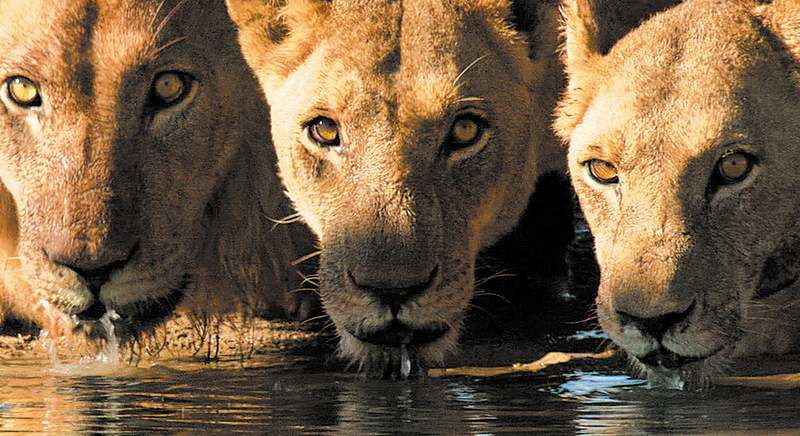An astonishing view of ‘earth’
Published 5:00 am Friday, April 24, 2009

- Lions wait for dark to fall before attempting to hunt elephants in the Kalahari Desert in Botswana in the nature film “earth.”
Made between 1948 and 1960, Walt Disney’s “True Life Adventures” won three Oscars for Best Documentary Feature, and several others won in the since-discontinued category of two-reel short features. Now the studio has returned to this admirable tradition with “earth,” which opened Wednesday. Earth Day. It’s a film that younger audiences in particular will enjoy.
To be sure, Disney didn’t produce the film. It is a feature-length compilation from the splendid BBC and Discovery Channel series “Planet Earth,” utilizing the big screen to make full use of its high-def images. The feature’s original narrator, Patrick Stewart, has been replaced by James Earl Jones.
What we see is astonishing. Polar bear cubs tumble their way to the sea. Birds of paradise make displays of ethereal beauty. Storks fly above the Himalayas. Elephants trek exhausted across a bone-dry desert. Humpback whales swim 3,000 miles to their summer feeding grounds off Antarctica.
A predator cat outruns a springbok. Ducklings leap from their nest to fly and plummet to the ground — a learning experience.
The most poignant sequence in the film shows a polar bear, lost at sea and searching for ice floes in a time of global warming, finally crawling ashore exhausted and starving. Desperate for food, he hopelessly attacks a herd of walruses, fails, and slumps dying to the earth; nearby walruses are indifferent.
In the tradition of such favorites of my childhood as Disney’s “The Living Desert” and “The Vanishing Prairie,” the narration provides these animals with identities.
It opens with a mother polar bear and two cubs. The desperate polar bear is identified as their father, although I will bet a shiny new dime that the authors of the narration have absolutely no evidence of its paternal history. I’m not complaining; in a film like this, that goes with the territory.
The film is filled with unexpected facts. Did you know the fir trees beginning at the northern tree line circle the globe with an almost unbroken forest, harbor almost no birds and mammals because they are not edible, and supply more of the planet’s oxygen than the rain forests? Or that baby whales have to be taught to breathe?
“Earth” is beautiful and worthwhile. At its pre-opening press screening, co-sponsored by the Lincoln Park Zoo in Chicago, we were supplied not with free popcorn but tiny evergreens to take home and plant.
“earth”
99 minutes
Rated G





